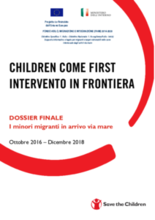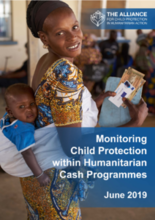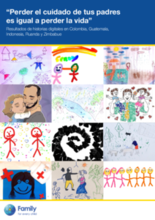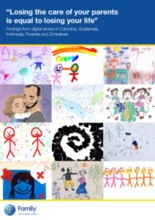Demographic Data
|
Sources: World Bank, UNDP, UNAIDS, DHS 2013 |
Displaying 6071 - 6080 of 14398
The general objective of the project "Children Come First: Intervention at the border" is to strengthen the system of protection and reception of migrant children arriving in Italy, whether they are separated or accompanied by their parents. In this final dossier, a balance sheet of the intervention has been drawn up and it focuses on the evolution of migration flows of unaccompanied foreign minors over the past two years.
“Current Aftercare Practices” (CAP) is a documentation exercise designed to look at the support and services received by CLs from the objective lens of an ‘Aftercare Quality Index’(AQI), calculated using the scores within 8 domains. This report covers a total of 98 young adults from Rajasthan, comprising of 40 males and 58 females CLs, from both Government and NGO-run Child Care Institutions (CCIs) and 17 youth who, as children, availed the benefits under the Palanhar scheme of the Rajasthan Government.
This descriptive study portrays a sample of children from Chinese migrant families residing in western Sydney, New South Wales, Australia, whose parents temporarily relinquished their care to grandparents in China.
This article from Marquette Law Review focuses on how children and parents interacting with the child welfare system in the US experience the removal process, the genesis of a foster care case.
In words, images, facts and figures, this report details the results that UNICEF achieved in 2018, together with its generous partners and supporters, a dedicated global workforce and children and young people themselves.
The purpose of this study is to better understand how gender inequality impacts the Community Based Child Protection Mechanisms in Cambodia, its child clubs and caregiver groups and how programming should be targeted to being gender transformative – changing social norms that promote gender inequality.
This report by War Child aims to bring global attention to the challenges related to the reintegration of children associated with armed forces and groups, and promote better policy, practice and funding in the future.
This paper from the Alliance for Child Protection in Humanitarian Action summarises findings from an initial scoping study, which seeks to review how child protection outcomes are captured when monitoring multi-purpose humanitarian cash programmes. The paper proposes a theory of change of the possible links between cash and child protection to inform the development of a monitoring strategy, including hypotheses that humanitarian cash might contribute to prevention of family separation, reduction of family violence, and supporting foster and temporary caregivers to care for separated and unaccompanied children.
This report explores what family means to children and adults in five countries using the digital storytelling technique.








